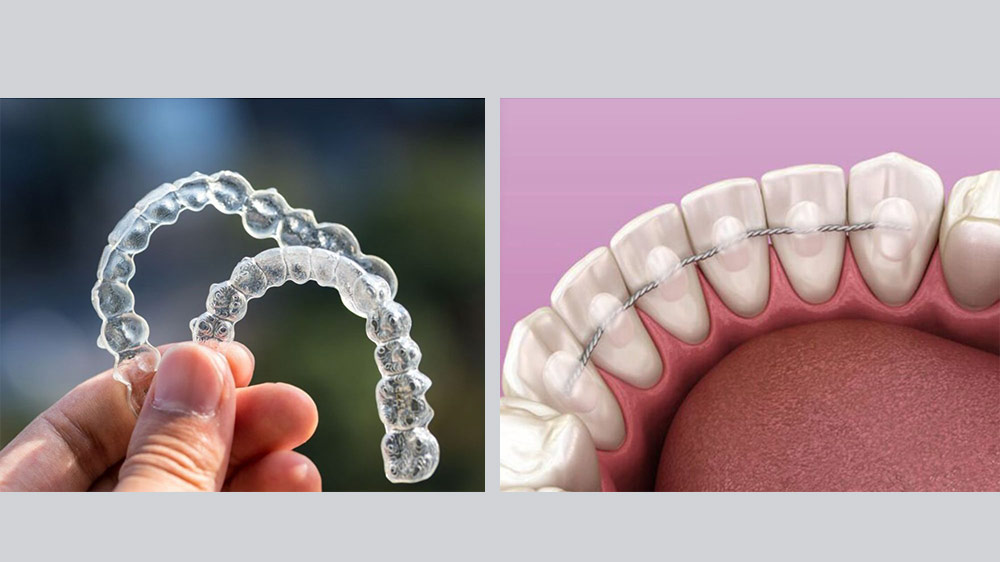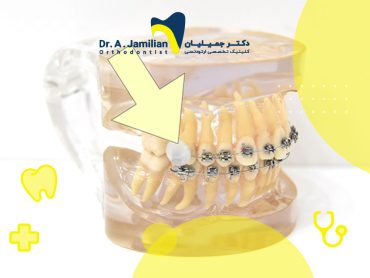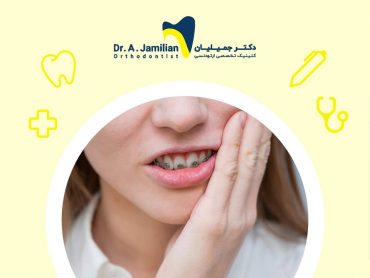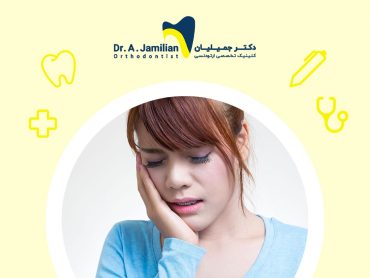Orthodontic treatments aim to correct dental and jaw malocclusions. Nevertheless, there are cases where the teeth may revert to their original position after the treatment. The term “orthodontic relapse” refers to this phenomenon. Orthodontic relapse denotes the shifting of teeth back to their initial position. This happens when teeth move and become misaligned for several reasons, including natural pressure from the surrounding tissues, bad habits, or inconsistent use of retainers. Orthodontic treatments are designed to correct dental and jaw malocclusions; however, neglecting aftercare may lead to orthodontic relapse. This article from Dr. Jamilian’s website explores the reasons behind orthodontic relapse and offers treatment options
Causes of orthodontic relapse?
Orthodontic relapse is an undeniable issue that may occur following the conclusion of orthodontic treatments. Numerous reasons can lead to orthodontic relapse, and identifying them is an effective approach to preventing this problem. The most common causes of orthodontic relapse are as follows:
1- Disregard for the orthodontist’s advice
An important cause of orthodontic relapse is disregard for the orthodontist‘s recommendations during the treatment course. Orthodontists typically give you detailed instructions on how to maintain the treatment outcomes, such as wearing retainers regularly, practicing good oral hygiene, and scheduling routine examinations. If you fail to wear retainers regularly, the teeth may return to their previous position, as oral tissues and muscles tend to push the teeth back to their original position.
2- Disregard for healthy eating habits and nutrition
One of the causes of orthodontic relapse is poor diet. Overindulging in hard, sticky foods like chocolates, candies, or nuts can put pressure on teeth, causing damage or displacement. For instance, calcium and vitamin D play a crucial role in maintaining strong teeth and preventing orthodontic relapse.

3- Teeth grinding/Bruxism
Bruxism or teeth grinding is another factor that may cause orthodontic relapse. If you experience bruxism during sleep, it is advisable to address it, as it can significantly harm the alignment of your teeth. The force from bruxism leads the upper teeth to exert pressure on the lower teeth, pushing them outward and prompting a return to their original position. In addition to bruxism, thumb sucking may also lead to orthodontic relapse; thus, it should be seriously considered and treated.
4- Tooth decay or tooth extraction after orthodontic treatments
One of the main causes of orthodontic relapse is tooth decay or extraction following orthodontic treatments. Cavities can compromise the integrity of your teeth, leading to tooth movement as a result of weakened structure or necessary dental restorations. Furthermore, if tooth extraction is performed without consultation with the orthodontist, it can disrupt the balance among the teeth and negatively affect their alignment. It is recommended that you take care of your teeth and see a dentist for the treatment of superficially decayed teeth in order to prevent orthodontic relapse.
5-Jaw growth in young people
The growth and alteration in the jaw’s shape can occasionally result in misalignment of the teeth, which may consequently lead to orthodontic relapse. Certainly, visiting an orthodontist significantly reduces the risk of this complication. An orthodontist should keep an eye on the patient’s treatment during adolescence, when the jaw bone is still growing, and help avoid this issue by directing the jaw growth process. When orthodontic treatments are performed before puberty, the orthodontist will use appropriate techniques to guide the teeth into the proper position to control jaw growth and maintain tooth alignment. In fact, jaw growth can be manipulated by applying external pressure and tension to the jawbone.
Tips to prevent orthodontic relapse
After analyzing the reasons behind orthodontic relapse, we find it necessary to offer suitable strategies to avoid this issue. The strategies and advice outlined below will help you ensure that environmental factors do not negatively impact your dental health, thereby preventing dental crowding.
1- Wearing a retainer regularly
It is crucial to use a fixed or removable retainer after the treatment course, as prescribed by the orthodontist. These devices maintain the teeth in their new position and prevent them from reverting to their original position. The most common retainers used for this purpose are:
- Clear or removable dental retainers
- Fixed or permanent retainers

2- Visiting the orthodontist regularly after treatment
Regular dental visits and routine check-ups after orthodontic treatments will help diagnose early issues and prevent teeth from shifting. We recommend scheduling an appointment every 3-6 months post-treatment.
3- Quitting bad habits
An effective way to prevent orthodontic relapse is to quit habits such as bruxism, nail biting, and thumb sucking. If you have these habits, it is better to consult a dentist or use special guards.

4- Maintaining good oral hygiene
A final yet important strategy to prevent orthodontic relapse is to maintain proper oral hygiene. In addition to brushing, flossing and mouthwash are also important for maintaining straight teeth.
It goes without saying that the risk of orthodontic relapse is significantly reduced when orthodontic treatments are performed by an experienced orthodontist. We recommend Dr. Jamilian because he provides the best orthodontic treatments with the lowest risk of relapse thanks to his expertise, experience, and unique techniques. You will surely benefit from reading Dr. Jamilian’s clients’ feedback after orthodontic treatments.
FAQ about orthodontic relapse
You should visit your orthodontist right away if you notice a relapse. Your orthodontist shall use proper techniques, such as corrective treatments or prescription of a retainer, to restore the teeth to their pre-relapse position.
Irregular use of retainers, tooth decay, poor oral hygiene, or imbalanced jaw growth are the main factors that may cause orthodontic relapse.
Orthodontic relapse is most likely to occur within the initial six months after brace removal; however, it may occur even several years after the treatment. At any rate, regular check-ups with your orthodontist every 6 months will ensure you won’t have an orthodontic relapse.







